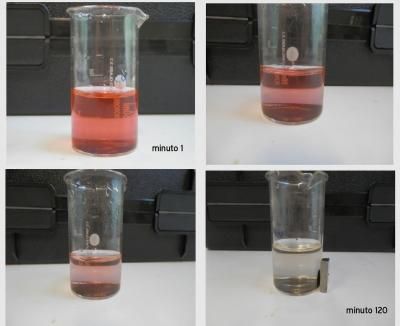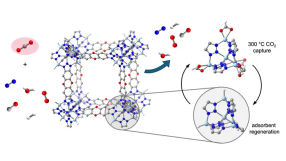Nanostructures to facilitate the process to eliminate organic contaminants in water
In her PhD thesis, Silvia Larumbe-Abuin has developed nanostructures that assist in the process to decontaminate water. The nanostructures are coated in titanium oxide to which nitrogen has been added. This allows sunlight, rather than ultraviolet radiation, to trigger the process involving the chemical reaction and destruction of contaminants. What is more, thanks to the magnetic nucleus of the particles, once the process has been carried out, they can be retrieved and reused.

This is the dissolution process of organic particles through nanoparticles.
Public University of Navarre (UPNA)
The basis of the research conducted is the phenomenon known as photocatalysis: when light affects a substance that acts as a catalyst, the speed of the chemical reaction is increased. In this case, the light activates the titanium oxide and different oxidizing radicals are formed; the latter destroy the organic contaminants in the water, which could be colouring agents, solvents, detergents, etc. As the author of the work explained, "it is a sustainable system that could be used as an alternative to different treatments used traditionally in waste water treatment and, specifically, to eliminate certain organic contaminants".
One of the advantages of this development is the possibility of using sunlight instead of ultraviolet light. "Since nitrogen is added to the coating of the particles, the mechanism that will trigger the process can be sunlight rather than ultraviolet radiation, which means a more accessible, less expensive alternative that poses fewer risks."
Other news from the department science

Get the chemical industry in your inbox
From now on, don't miss a thing: Our newsletter for the chemical industry, analytics, lab technology and process engineering brings you up to date every Tuesday and Thursday. The latest industry news, product highlights and innovations - compact and easy to understand in your inbox. Researched by us so you don't have to.



























































